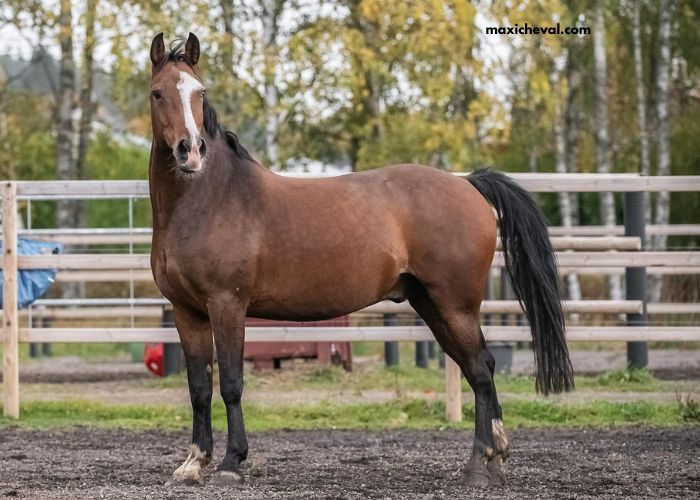Turf betting is a popular form of horse racing betting that involves wagering on races that are run on grass instead of a dirt track. The term “turf” refers to the grass surface on which the race is conducted. Turf betting is known for its unique challenges and opportunities, and understanding the basics is crucial for success in this form of betting.
In turf betting, the condition of the grass track plays a significant role in determining the race’s outcome. Turf tracks can vary in firmness, which affects how horses perform. Some horses excel on firm turf, while others prefer softer ground. The weather conditions leading up to the race can also impact the condition of the turf track, making it essential to consider these factors when handicapping turf races.
The Basics of Turf Betting
To get started with turf betting, it’s essential to understand the basic terminology and principles. Like any other form of horse racing, turf betting involves selecting a horse and placing a wager on it to win, place, or show. The “win” bet means betting on a horse to finish. First, the “place” bet means you’re betting on a horse to finish first or second, and the “show” bet means betting on a horse to finish in the top three positions.
In turf betting, you’ll also encounter exotic wagers such as exactas, trifectas, and superfectas. These bets involve predicting the exact order of finish for multiple horses. While they offer higher payouts, they are also more challenging to win. It’s advisable to start with simple win, place, and show bets before venturing into exotic wagers.
Understanding the Different Types of Turf Races
Turf races come in various forms, and it’s crucial to understand the differences between them to make informed betting decisions. The most common types of turf races include sprints and routes. Sprints are shorter distance races, usually under a mile, while routes are longer distance races, typically over a mile. Horses have varying abilities and preferences for different distances, so it’s essential to consider the distance of the race when handicapping turf events.
Another important distinction in turf races is between graded and non-graded stakes races. Graded stakes races are higher-level races that attract top-quality horses, while non-graded stakes races are lower-level races that may feature less competitive fields. The class of the race can significantly impact the quality of the horses participating and should be taken into account when analyzing turf races.
Factors To Consider When Handicapping Turf Races
Handicapping turf races requires careful analysis of various factors that can influence the race’s outcome. One of the most critical factors is the horse’s past performance on turf. Some horses excel on grass surfaces, while others may struggle. Evaluating a horse’s previous turf performances can provide valuable insights into its suitability for the upcoming race.
Additionally, it’s essential to consider the jockeys’ and trainers’ records in turf races. Some jockeys and trainers are known for performing exceptionally well on turf, indicating their expertise in handling horses on grass surfaces. Their track records can give you an edge in assessing the horse’s capabilities and the team behind it.
Other factors to consider include the horse’s current form, its breeding, the pace of the race, and any recent changes in equipment or medication. Each of these factors can have a significant impact on a horse’s performance on turf and should be thoroughly analyzed before making a betting decision.
Tips for Successful Turf Betting
Successfully betting on turf races requires knowledge, analysis, and strategy. Here are some tips to help you make informed betting decisions and increase your chances of success:
- Research and analyze past performances: Thoroughly examine a horse’s past performances on turf to gauge its suitability for the upcoming race. Look for consistently strong performances and consider any recent improvements or declines.
- Pay attention to turf condition and weather: The condition of the turf track and the weather forecast can significantly impact race outcomes. Firm or soft turf surfaces can favor different horses, so consider these factors when handicapping.
- Consider jockey and trainer expertise: Experienced jockeys and trainers with a successful track record on turf can give you valuable insights into a horse’s chances of performing well. Take note of their past performances and success rates on grass surfaces.
- Watch replays and review race data: Watching replays of previous turf races can provide valuable information about a horse’s running style and performance on grass. Additionally, reviewing race data and statistics can help identify trends and patterns.
- Practice proper bankroll management: Set a budget for your turf betting activities and stick to it. Avoid chasing losses or betting more than you can afford. Proper bankroll management is crucial for long-term success in turf betting.
Common Mistakes To Avoid in Turf Betting
While turf betting can be rewarding, there are several common mistakes that bettors should avoid. Being aware of these pitfalls can improve your chances of making profitable wagers. Here are some mistakes to watch out for:
- Ignoring turf-specific factors: Turf races have unique characteristics that differ from dirt. Ignoring factors such as turf condition, horse preferences, and jockey/trainer expertise on grass can lead to poor betting decisions.
- Overlooking race class: The race class can significantly impact the horse’s participation quality. Failing to account for race class when handicapping turf races can result in underestimating or overestimating a horse’s chances of success.
- Relying solely on past performances: While past performances are essential, they should not be the basis for making betting decisions. Turf conditions, recent form, jockey and trainer expertise, and other factors should also be considered.
- Betting on too many races: It can be tempting to bet on every turf race, but spreading your bets too thin can lead to diluted profits. Focus on select races where you have thoroughly analyzed and have confidence in your choices.
- Failing to adapt and adjust: Turf conditions can change throughout the day, and it’s essential to adapt your betting strategy accordingly. Be flexible and willing to adjust your approach based on track conditions and other relevant factors.
Advanced Turf Betting Strategies
Once you have a solid understanding of the basics of turf betting, you can explore advanced strategies to enhance your chances of success. Here are a few advanced turf betting strategies to consider:
- Pedigree analysis: Analyzing a horse’s breeding can provide insights into its suitability for turf racing. Some bloodlines are known to produce successful turf runners, and recognizing these patterns can give you an edge in handicapping.
- Pace analysis: The pace of a race can be crucial in turf betting. Identifying the likely pace scenario and how it aligns with a horse’s running style can help you identify which horses will benefit from a fast or slow pace.
- Trip handicapping: Paying attention to a horse’s trip in previous races can reveal valuable information about its ability to handle turf surfaces. Look for horses that encountered trouble or had a particularly favorable trip on grass.
- Weight analysis: Weight can play a role in turf races, particularly in handicaps. Assessing the weight carried by each horse and how it compares to its past performances can help identify potential advantages or disadvantages.
- Using analytical tools: Utilize advanced analytical tools and software to analyze race data, track conditions, and other relevant factors. These tools can provide valuable insights and help you make data-driven betting decisions.
Resources and Tools for Turf Betting Analysis
To excel in turf betting, leveraging the available resources and tools to enhance your analysis is important. Here are some valuable resources and tools to consider:
- Past performance charts: Utilize past performance charts, such as the Daily Racing Form (DRF), to analyze a horse’s past performances on turf. These charts provide detailed information about each race, including speed figures, class levels, and jockey/trainer statistics.
- Race replays: Watching race replays can provide valuable insights into a horse’s running style, positioning, and performance on turf. Many racetracks offer replays on their websites or through dedicated platforms.
- Handicapping forums and communities: Engage with fellow turf bettors in online forums and communities to exchange ideas, strategies, and insights. These platforms can provide a wealth of knowledge and help you stay updated with the latest trends and information.
- Data analysis software: Invest in data analysis software to help you process and analyze large amounts of race data. These tools can assist in identifying patterns, trends, and opportunities that may not be apparent through manual analysis.
- Jockey and trainer statistics: Keep track of jockey and trainer statistics on turf racing. Many racing websites provide comprehensive statistics on jockey and trainer performance on grass surfaces, allowing you to identify trends and patterns.
The Importance of Bankroll Management in Turf Betting
Regardless of the type of betting you engage in, bankroll management is crucial for long-term success. In turf betting, it’s essential to have a disciplined approach to managing your betting funds. Here are some fundamental principles of bankroll management to consider:
- Set a betting budget: Determine the money you will allocate for turf betting. This budget should be separate from your regular expenses and only consist of funds you can afford to lose.
- Define unit sizes: Divide your betting budget into units, each representing a percentage of your bankroll. This allows you to make consistent and controlled wagers based on the size of your bankroll.
- Avoid chasing losses: Losing streaks is a part of betting, and it’s important not to chase losses by increasing your wager sizes or making impulsive bets. Stick to your predefined unit sizes and avoid emotional decision-making.
- Track your bets: Keep a detailed record of your bets, including the type of wager, the amount wagered, and the outcome. This will help you identify any patterns or areas of improvement in your betting strategy.
- Adjust unit sizes as your bankroll grows or shrinks: As your bankroll increases or decreases, adjust your unit sizes accordingly. This ensures that your wager sizes are proportional to the size of your bankroll and helps manage risk.
Conclusion
Turf betting offers a unique and exciting opportunity for horse racing enthusiasts. Understanding the basics of turf betting, analyzing key factors, and employing effective strategies can increase your chances of making profitable wagers. Remember to stay disciplined, practice proper bankroll management, and refine your handicapping skills. With the right approach and a thorough understanding of turf racing, you can enjoy success in this captivating form of betting.




